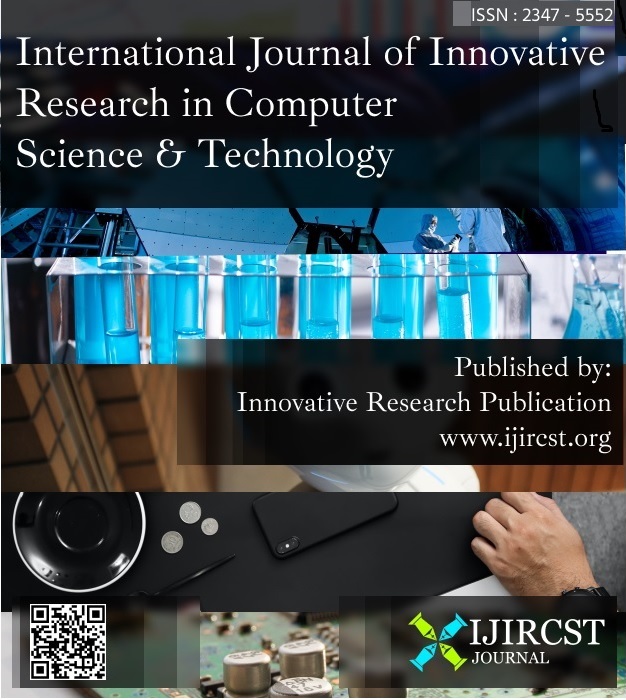Machine Learning Approaches in Spatial Data Mining
Keywords:
Spatial Data Mining, Machine Learning, Geographic Information Systems, Classification, Clustering, Spatial-Temporal Analysis, Data IntegrationAbstract
This review paper surveys the integration of machine learning techniques in spatial data mining, a crucial intersection of geographic information systems and data mining. It examines the application of various machine learning algorithms such as classification, regression, clustering, and deep learning in spatial data analysis. The paper discusses challenges like data preprocessing, feature selection, and model interpretability, alongside recent advancements including spatial-temporal analysis and heterogeneous data integration. Through critical analysis of existing literature, it identifies trends, methodologies, and future research directions. Practical implications and applications across domains like urban planning, environmental monitoring, and epidemiology are explored. As a comprehensive resource, this review facilitates understanding and utilization of machine learning approaches for extracting insights from spatial data, benefiting researchers, practitioners, and policymakers alike.
References
L. Anselin, “Spatial Econometrics: Methods and Models,” Springer, 2019.
Y. Chen et al., “Urban Scene Understanding via Graph Convolutional Networks,” in Proceedings of the IEEE Conference on Computer Vision and Pattern Recognition (CVPR), 2019.
J. Choi et al., “Deep Learning-Based Arrhythmia Detection from Ambulatory Electrocardiography Data,” Sensors, vol. 21, no. 3, p. 842, 2021.
J. Gao et al., “A Deep Learning Approach to Detect DDoS Attacks Using Convolutional Neural Networks,” Future Generation Computer Systems, vol. 102, pp. 1122-1131, 2020.
X. Jia et al., “Anomaly Detection in Water Quality Monitoring Data Using Machine Learning Techniques,” Environmental Science and Pollution Research, vol. 26, no. 31, pp. 31680-31691, 2019.
X. Li et al., “Deep Learning-Based Air Quality Prediction in Urban Areas,” Environmental Pollution, vol. 242, pp. 608-618, 2018.
Y. Li et al., “Hierarchical Clustering Analysis of Urban Growth Patterns Using Remote Sensing Data,” Remote Sensing, vol. 12, no. 7, p. 1146, 2020.
T. Y. Lin et al., “Single Shot Multibox Detector,” in Proceedings of the IEEE Conference on Computer Vision and Pattern Recognition (CVPR), 2017.
W. Liu et al., “Land Cover Classification Using K-Means Clustering in Urban Areas,” Remote Sensing, vol. 11, no. 8, p. 896, 2019.
Z. Shen et al., “Predicting Future Land Use Changes Using Machine Learning Techniques,” Land Use Policy, vol. 90, p. 104305, 2020.
H. Wang et al., “Anomaly Detection of Dengue Fever Transmission Using DBSCAN Clustering,” International Journal of Environmental Research and Public Health, vol. 15, no. 11, p. 2434, 2018.
S. Yang et al., “Machine Learning-Based Prediction of Dengue Fever Spread in Urban Areas,” International Journal of Environmental Research and Public Health, vol. 16, no. 3, p. 443, 2019.
J. Zhang et al., “Deep Learning-Based Land Cover Classification in Urban Areas Using High-Resolution Satellite Imagery,” Remote Sensing, vol. 12, no. 6, p. 932, 2020.
M. Ankerst et al., “OPTICS: Ordering Points to Identify the Clustering Structure,” ACM SIGMOD Record, vol. 28, no. 2, pp. 49-60, 1999.
L. Breiman, “Random Forests,” Machine Learning, vol. 45, no. 1, pp. 5-32, 2001.
N. Cressie, “Statistics for Spatial Data,” Wiley, 2015.
B. S. Everitt et al., “Cluster Analysis,” Wiley, 2011.
J. H. Friedman, “Greedy Function Approximation: A Gradient Boosting Machine,” Annals of Statistics, vol. 29, no. 5, pp. 1189-1232, 2001.M. F.
Goodchild et al., “Foundations of Geographic Information Science,” CRC Press, 2007.Hastie, T., et al., The Elements of Statistical Learning: Data Mining, Inference, and Prediction”, Springer, 2009
K. He et al., "Deep Residual Learning for Image Recognition," in Proceedings of the IEEE Conference on Computer Vision and Pattern Recognition (CVPR), 2016.
B. Lantz, "Machine Learning with R," Packt Publishing Ltd., 2013.
Y. LeCun et al., "Deep Learning," Nature, vol. 521, no. 7553, pp. 436-444, 2015.
T. M. Mitchell, "Machine Learning," McGraw Hill, 1997.
K. P. Murphy, "Machine Learning: A Probabilistic Perspective," MIT Press, 2012.
F. Pedregosa et al., "Scikit-learn: Machine Learning in Python," Journal of Machine Learning Research, vol. 12, pp. 2825-2830, 2011.
Raschka et al., "Python Machine Learning," Packt Publishing Ltd., 2015.
B. Schölkopf et al., "Estimating the Support of a High-Dimensional Distribution," Neural Computation, vol. 13, no. 7, pp. 1443-1471, 2001.
R. Tibshirani, "Regression Shrinkage and Selection via the Lasso," Journal of the Royal Statistical Society: Series B (Methodological), vol. 58, no. 1, pp. 267-288, 1996.
I. H. Witten et al., "Data Mining: Practical Machine Learning Tools and Techniques," Morgan Kaufmann, 2016




